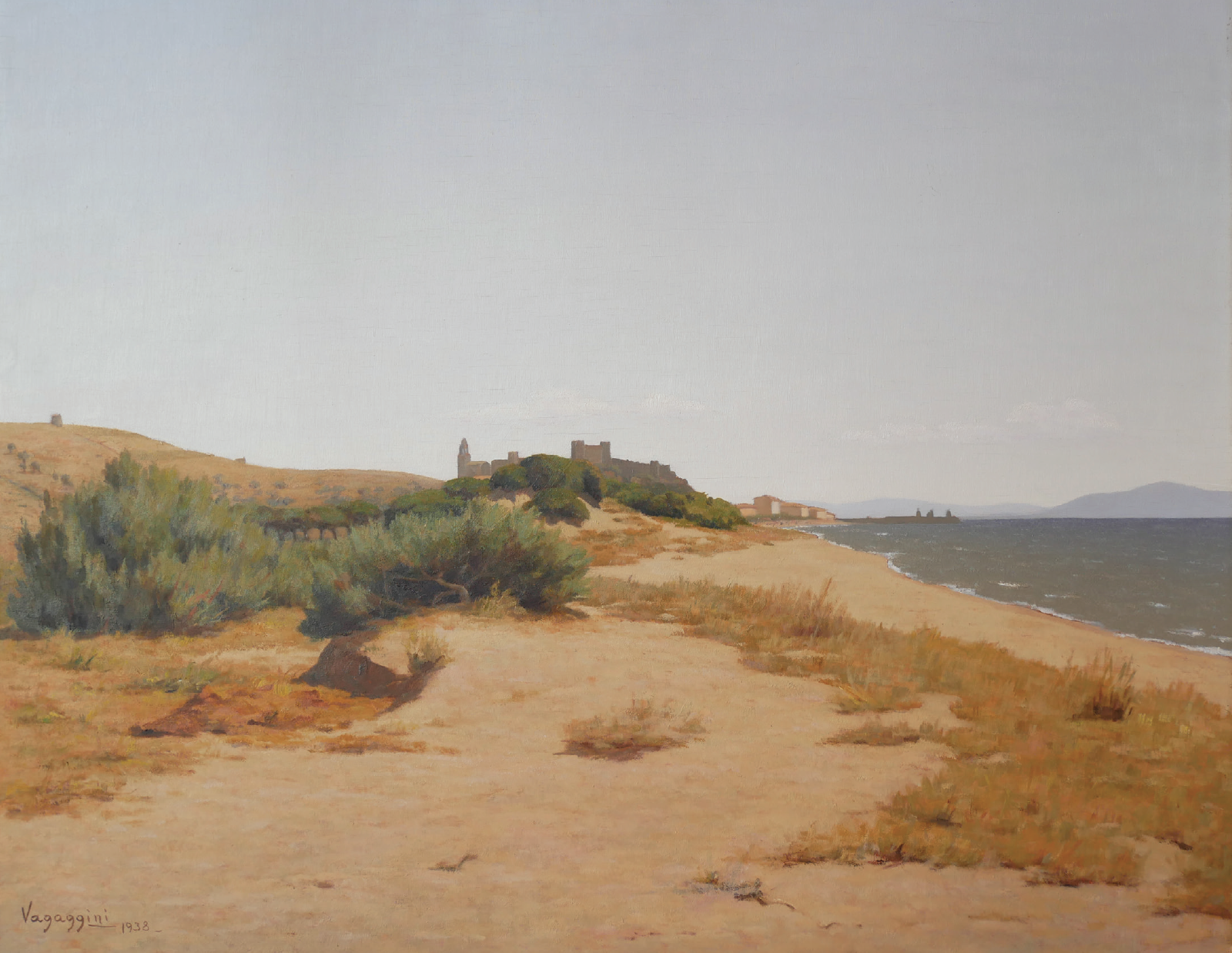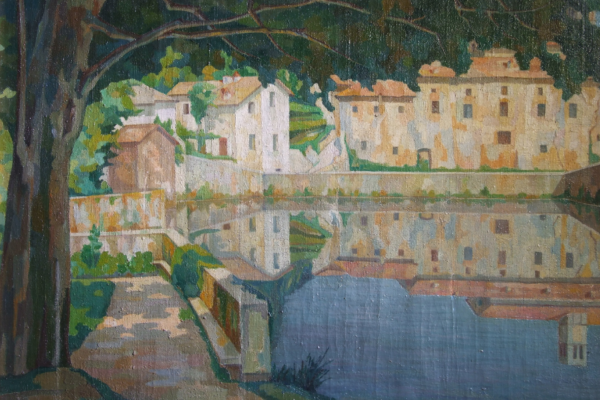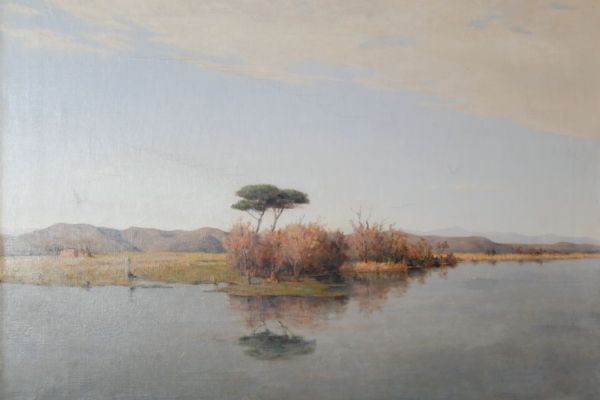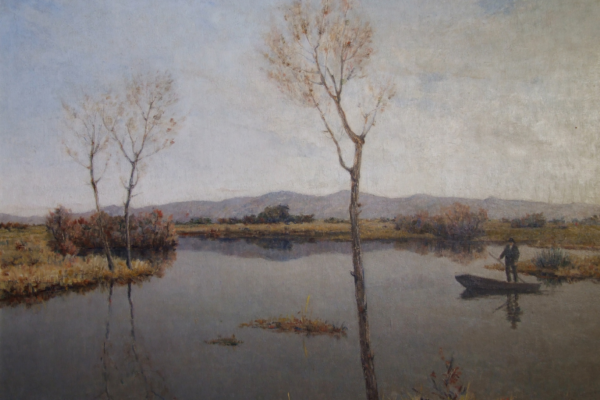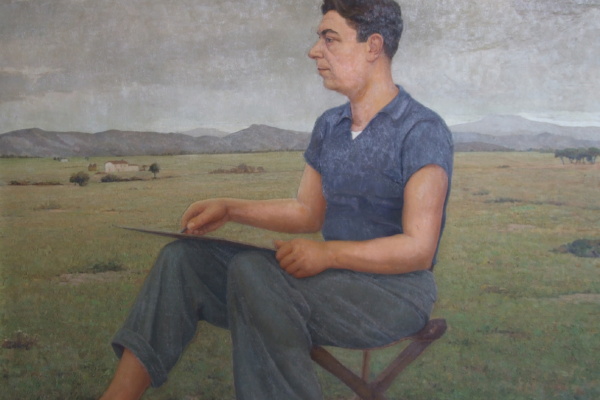The sunny, deserted shore stretches parched under a crystalline sky made almost colourless by the heat of the sun. In the centre of the canvas, the artist’s gaze places the outline of Castiglione high on the horizon, balanced on the sides by two symmetrical plateaus, achieving a visual equilibrium that renders the scene ideal and abstract, like a land dreamed of or lost forever.
Castiglione della Pescaia
Memo ( Nicodemo) Vagaggini
Santa Fiora 1892 – Florence 1955
After studying in Florence, Memo Vagaggini was sent to the warfront where he was wounded. Returning to his home town, in 1918 he met his future wife Gina Dumonal, a student of Giacomo Grosso at the Accademia in Turin. In the following years Vagaggini alternated stays in Tuscany and in Turin, where he encountered the art of Felice Casorati, which inspired the limpid, abstract visions he exhibited at the Promotrice di Belle Arti in Turin; among them was Impression of the Valle d’Aosta, bought by the Italian royal family in 1920. Starting in 1927, besides painting he worked as an illustrator for the publishing houses Barbera in Florence and Corticelli in Milan. At the end of the 1920s he was named representative of the Italian government at the Villa Romana in Florence, where he met the director Hans Purrmann, a student of Matisse and openly anti-Nazi, who introduced him to Ottone Rosai and Giovanni Papini. In 1938 Vagaggini won the Carnegie Prize in Pittsburgh; the Kraft and Steinhauslin families were among his assiduous collectors. He continued to paint Maremman landscapes which, presented at the most important art fairs, were bought by modern art galleries in Asti, Bari, Rome, Florence, and Milan, and by many private patrons.
Modest and reserved, but determined as befitting his Mount Amiata origins, he remained faithful to landscapes painted from life, serene and composed in a noontime light, until his untimely death.


